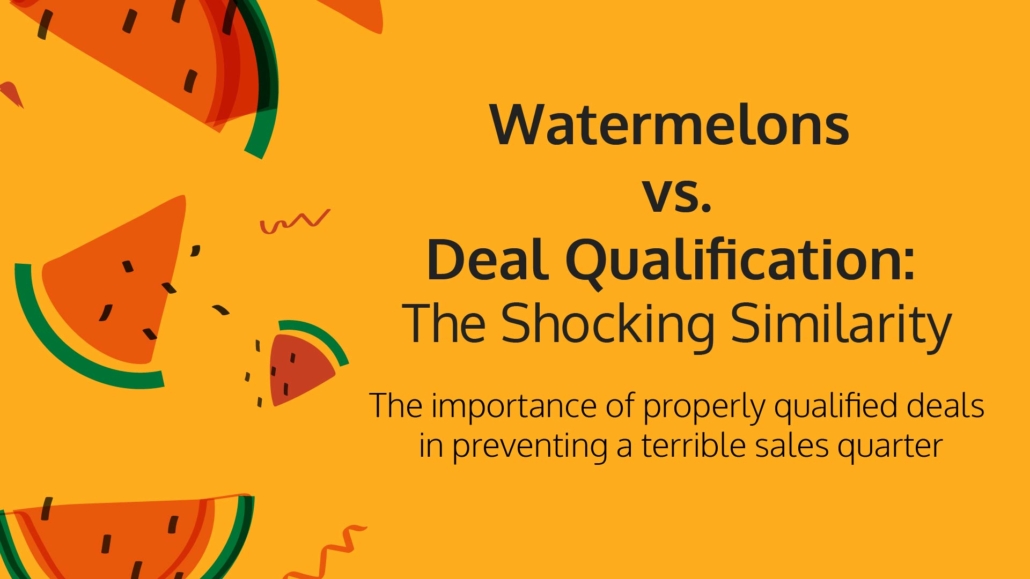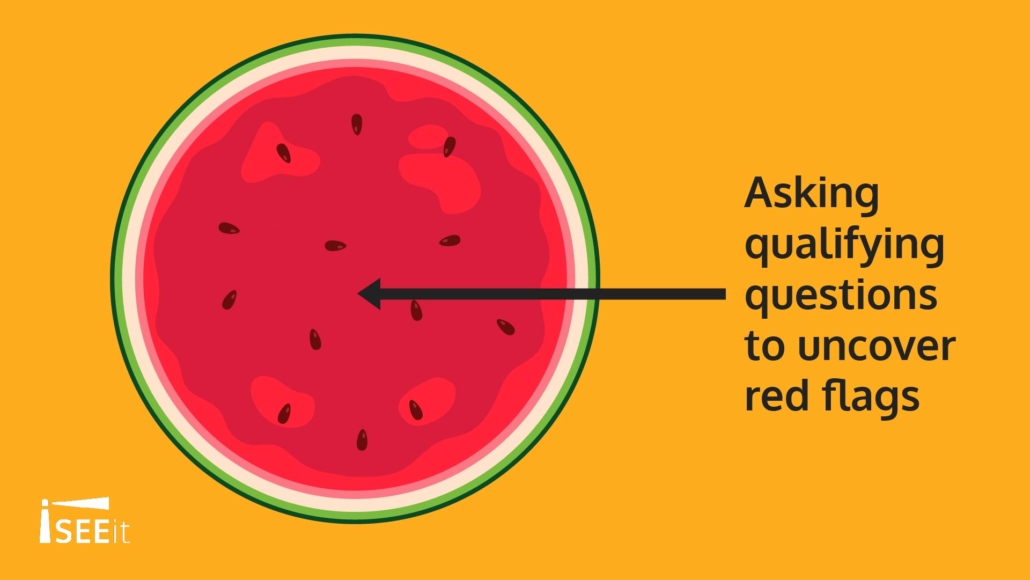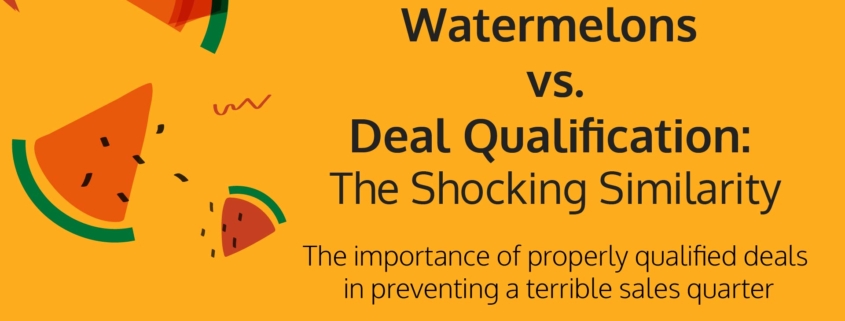Watermelons vs. Deal Qualification: The Shocking Similarity

Have you ever found yourself in a scenario where your deals look like they are on track to close at first glance? You’ve spent endless hours researching on LinkedIn, writing VITO letters, cold calling to get meetings and now you’ve generated some leads. You are prepared to get the ball rolling and the prospect is ready to meet with you. You feel excited to finally be able to present your product to the prospect.
On the outside, it seems like the presentation went well – yet you don’t feel 100% happy. Deep down, you know your gut is telling you that things are not as rosy as they seem. However, you put on your “happy ears” as they tell you that the customer likes your solution and wants to go further. As a result, you miss out some giant red flags as you’re too focused on pushing for the next steps to close this deal.
This is what Deidre Paknad describes as “Watermelon Metrics” – when your deal appears to be green on the outside, but is actually bright red when you slice right into it. Oftentimes, sales reps don’t spend enough time re-qualifying these seemingly green deals, or fail to pay enough attention to the little warning signs. However, once they start digging, common problems that prevent deal closures slowly start to surface.
There are 3 main reasons as to why sales reps struggle to ask qualifying questions:
- They think that their deals are in good shape because of their happy ears. This causes them to ignore the warning signs, blocking their ability to properly qualify deals.
- Although they get a gut feeling, usually late in the sales process and campaign way down in the quarter, they end up getting scared of upsetting the client by qualifying too hard.
- The answers to the “3 Whys” are unclear – more importantly, the “Why now” is not compelling enough and the “Why us” is not clear enough to all decision makers. Hence, the deals fall apart.
Proper Deal Qualification is Key
The best sales reps I have met are always paranoid about things that could go wrong. That’s why they constantly qualify deals throughout the sales campaign. These types of sales reps hardly get bad surprises in the end.
They slow down the sales process in the beginning and deeply qualify deals. The deal only turns green when they have positive answers to the following questions:
- Why do I have to do something? What is the implication of not acting?
- Is the pain big enough to pay the check in the end? Can I get some hard metrics?
- Do I know all relevant people? Who needs to get involved?
- Can I develop somebody to champion me through the sales process?
- Who needs to sign the check? Can I get access to the Economic Buyer?
- Do we have competition and people in the decision making process that lean towards them.

They know a deal is never secured until the signature is on the dotted line. Therefore, they keep on qualifying throughout the entire sales process. The earlier you start asking these questions, the more time you give yourself to address these issues so that you can stick to your timeline.
While asking questions to qualify deals for most successful salespeople is as simple as asking “How are you?” to a friend, for many people it often feels more like “Do you have information that would bury my deal with you?”. Why is this so?
This is because we are afraid of consequences like hearing a “No”. However, asking these questions to qualify deals naturally reveals the truth and helps you get to the bottom of any issue. Honestly, isn’t it better to know a potential “No” upfront and have time to address it and turn it to a “Yes”?
How to Identify Red Flags and Qualify Deals
With the iSEEit Opportunity Management Tool, you will get the tools to assess the “Watermelon Deals”. This allows you to slice and dice your sales process by going through it step by step.
By asking the right qualifying questions, red flags are quickly identified and visualized in insightful reports through visual indicators (traffic light colors). This gives you full clarity on which deals are green and which aren’t, allowing you to plan your next steps accordingly.

Progress on every deal can be tracked directly in Salesforce, which facilitates identifying risky deals earlier in your sales process steps, reducing slipped deals towards the end of the quarter. Click here to watch a quick overview of the iSEEit Opportunity Management Tool.
In conclusion, a deal is not always as green as it seems. There will always be unforeseen roadblocks, changes in priorities, budget constraints, politics, competition and many other hiccups. Always ask important questions early in your sales process steps to create a pipeline of qualified deals. This will help you can establish an accurate forecast and close your sales quarter strong. If you’d like to find out more about how iSEEit can support you in properly qualifying deals, request a FREE demo with us today!







Leave a Reply
Want to join the discussion?Feel free to contribute!